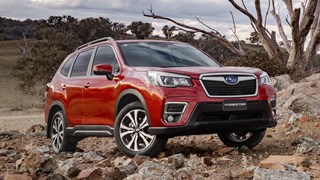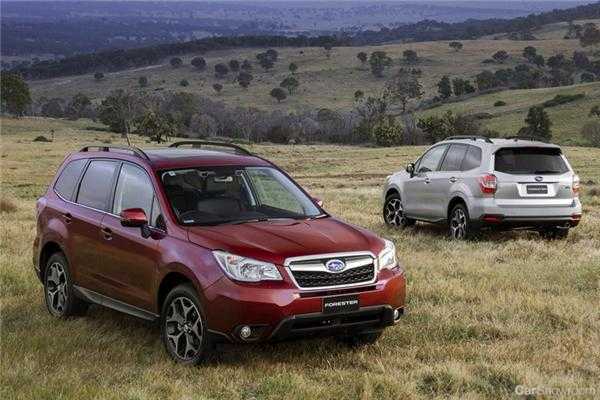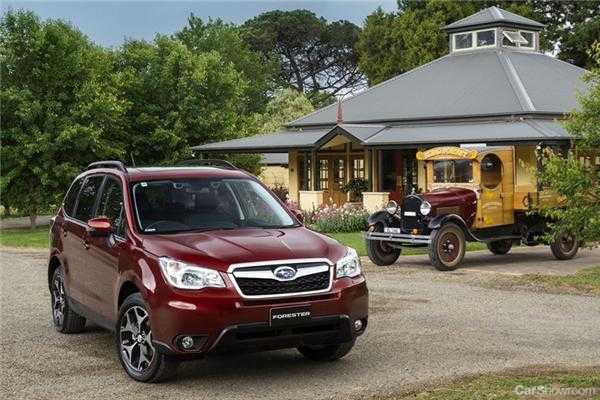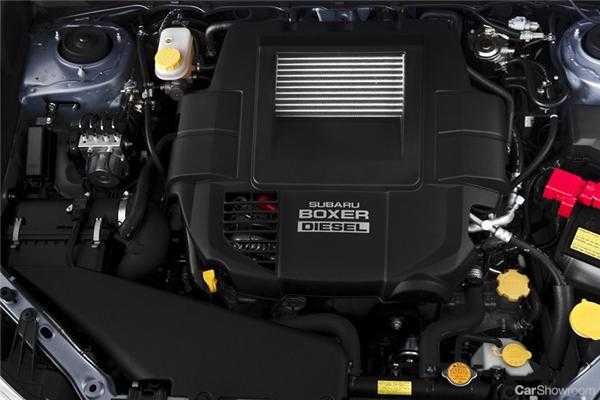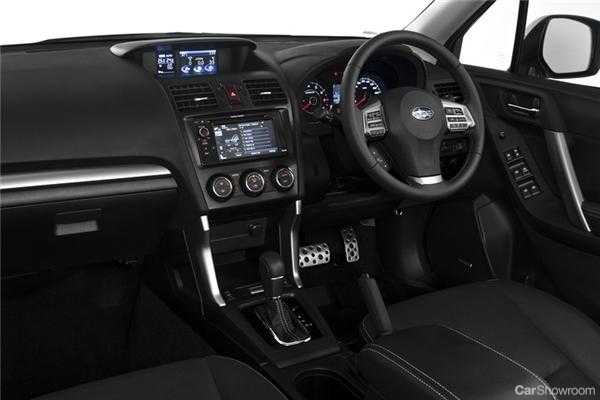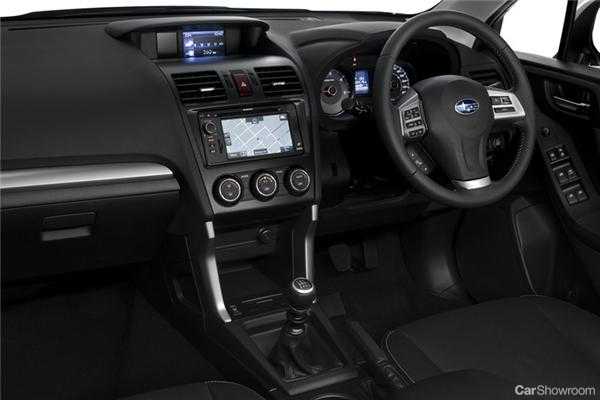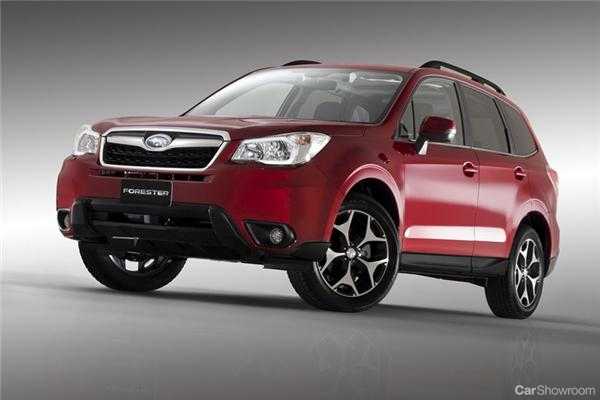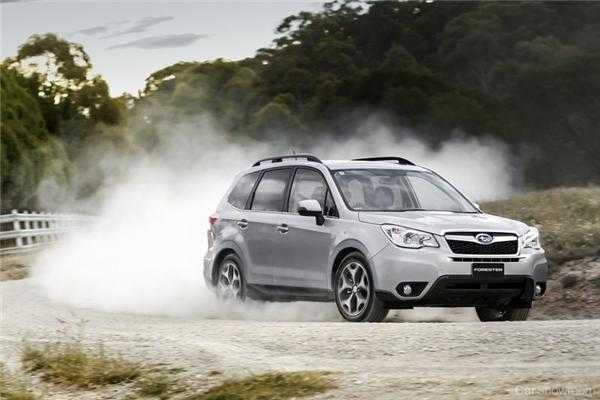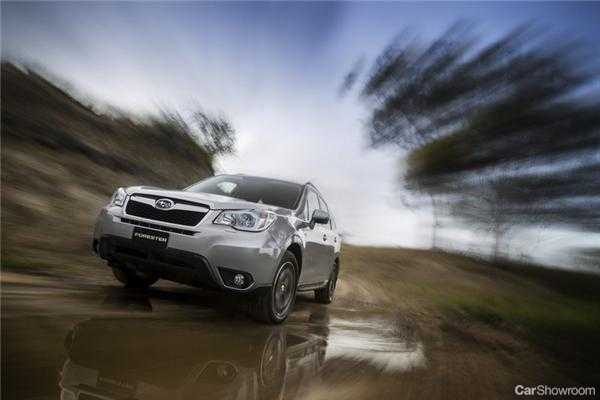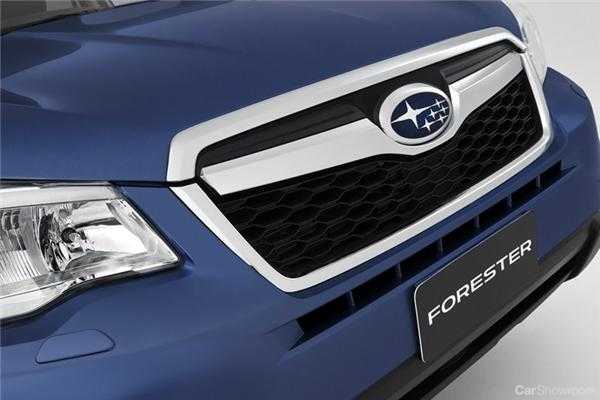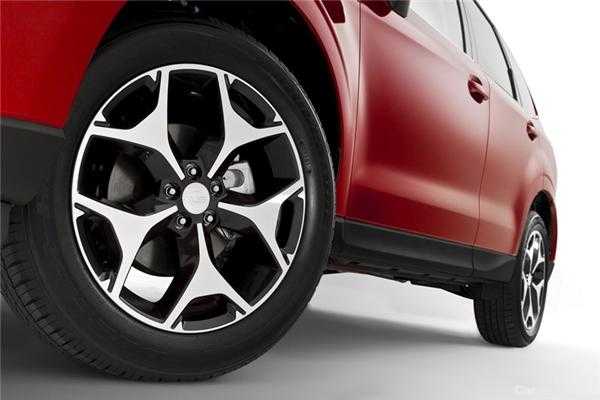Car Showroom has just spent a day driving the all-new fourth generation Subaru Forester which goes on-sale next February. Subaru did not disclose prices for the all-new Forester, but with a new entry-level 2.0-litre model leading the way, we’re tipping a starting point around $30,000.
The new Subaru Forester is good, very good - like previous models, a great all-rounder which ticks all the boxes for buyers of mid-size SUVs. Of course it had to be great as Forester’s stranglehold on the top-seller rung in this segment has been over-run by Mazda’s hot-selling new CX-5.
And that’s why we reckon the target for the all-new Subaru Forester 2.0i must be the $32,380 sticker of the Mazda CX5 Maxx. And you can bet Toyota will be eyeing similar prices for the all-new RAV4 which is likewise an early New Year arrival.
So if you’re considering buying in this segment, our advice after a day in the all-new fourth generation Subaru Forester - and knowing what we know about the all-new Toyota RAV4 after the Los Angeles Auto Show - is to delay your purchase until February so you can make a fair comparison.
Subaru Forester Overview
For the all-new Forester, Subaru has changed the model grades. Entry-level petrol models are the ‘i’ model (2.0-litre and 2.5-litre) while the entry-level diesel is the 2.0D.
Mid-grade ‘L’ adds some extra chrome, leather-wrapped steering wheel and gear-lever and 17-inch alloy wheels, while range-topping ‘S’ adds interior leather, satellite navigation , EyeSight (petrol models only, optional on the diesel).
Other good news for Forester buyers - towing capacity is up by 100kgs for petrol models to 1500kgs and by 200kgs for turbo-diesel models to 1800kgs.
Lots of extra safety too including a drivers’ knee airbag bringing the total to seven.
Subaru Forester Engine
Subaru’s focus for the all-new Forester was enhanced fuel consumption and the big news on the powerplant front is the new 2.0-litre petrol engine and auto/start stop for all naturally-aspirated models.
For the Forester, Subaru’s 2.0-litre petrol boxer engine delivers 110kW of power at 6200rpm and peak torque of 198Nm at 4200rpm. Fuel consumption is rated at 7.2l/100kms and exhaust CO2 scores 168g/km.
While there have been numerous internal changes to Subaru’s 2.5-litre petrol engine in the quest for better fuel economy, maximum power remains 126kW at 5800rpm and peak torque is still 235Nm at 4100rpm. But Subaru says the changes have meant stronger low to mid-range torque despite the efficiency gains.
In fact the 2.5-litre automatic versions we drove boast a 12.9 per-cent improvement in fuel consumption (now 8.1l/100kms) and a 15 per-cent cut in exhaust C02 (down to 187g/km).
Subaru’s remarkable 2.0-litre boxer turbo-diesel produces 108kW at 3600rpm and 350Nm from 1600rpm. Fuel consumption is 5.9l/100kms and exhaust CO2 156g/km.
Transmission choices are a six-speed manual or CVT auto with paddleshifts for manual changes.
Subaru Forester The Interior
All-new Subaru Forester’s longer wheelbase and the 200mm forward-shift of the A-pillar have contributed to extra interior space (rear seat legroom is particularly impressive, aided by a lower floor and smaller driveshaft tunnel). As well, the all-new look and better quality materials have delivered a much more upmarket look.
There was also a focus on better visibility – hence not only the front quarter glass windows but also the lowered dashboard top panel and raised hip points for the new-design seats (60mm higher backrest and more support).
Enhancing the feeling of spaciousness, the dashboard is further away from the front-seat passenger and there is 15mm more elbow and shoulder room.
As usual with Subaru, the new-look dashboard runs conventional two-gauge instruments (sometimes the tried-and-proven are actually the best). Textured satin finishes add to the new upmarket style.
Audio is a six-speaker CD system with the usual connectivity features and to the left of the driver sits the multi-function display screen which doubles as the satellite navigation and EyeSight screen (when fitted).
Subaru Forester Exterior & Styling
Subaru stylists have delivered a more modern, aerodynamic take on the hallmark Forester wagon styling.
Size is up – the all-new Subaru Forester is 35mm longer overall than its predecessor and 24mm longer in the wheelbase. The rear roof line is lower and the rear-end narrower (to enhance aerodynamic efficiency) – but interior space is actually larger.
At the front, the A-pillar has shifted forwards, there are triangular quarter glass windows and the windscreen is flush-mounted for an overall sleeker, more aerodynamic look. The aluminium bonnet is higher and the usual Subaru grille is flanked by modern headlights.
The side sees a flared lower body with protector panels on the lower edge of the doors which adopt the ‘hidden sill’ design to reduce dust intrusion and dirt. Subaru ‘tragics’ will pick the new-style exterior mirrors and the fact they have been relocated from the A-pillar (for reduced wind noise and enhanced aerodynamics).
At the rear is a nicely-styled tail-gate, new-look lights and all Foresters now run a rear spoiler.
S models score an electronic cargo door which includes a function enabling you to set the opening height (handy for garages with low ceilings).
Entry-level 2.0-litre models run 17-inch steel wheels, going upscale there are 17-inch alloys, while the ‘S’ models gain handsome 18-inch alloys styled like the wheels on the Subaru XV.
Subaru Forester On The Road
For this preview of the all-new Forester, Subaru used pre-production cars and sadly there were no examples of the new 2.0-litre entry-level model. So we drove both the 2.5-litre petrol and 2.0-litre turbo-diesel models over a variety of roads in and around Canberra.
Our off-road testing of the all-new Subaru Forester was brief, but Subaru was keen to show-off the new X-Mode system which manages engine ECU, traction control, hill descent control and vehicle dynamics control to assist tough hill climbs and descents. You simply hit the X-Mode switch and use the accelerator or brake pedal to set your desired speed and then just steer – Subaru X-Mode does the rest, juggling traction, power and braking to maintain that speed…very clever.
Subaru Forester diesel – like the entry-level 2.0-litre petrol – scores a new six-speed manual transmission (different ratios for the diesel). And as always, the ingenious boxer turbo-diesel pulled strongly through the gears and the transmission was slick when swapping cogs.
We also drove the Subaru Forester 2.5i and 2.5i-S. Apart from the good-looking 18-inch alloys, the 225/55 Bridgestone tyres on the S model delivered a slightly sportier on-road dynamic.
The all-new Subaru Forester includes a new, stiffer body structure (needed in part to meet North America’s upcoming overlap crash test requirements). At the front, the anti-roll bar stiffness has been increased from 21mm to 24mm, mounts have been strengthened and detail changes to the rear include bushes and valving primarily to reduce toe changes for enhanced straight line stability.
Subaru’s EyeSight system is also included in the S model’s extras and, as per our previous experience with this clever safety system, we were impressed – we didn’t need the adaptive cruise control but we did notice the audible alarms when we accidentally crossed painted lines. Trust Subaru to lead the way amongst the mainstream Japanese brands in bringing this safety breakthrough to reasonably priced family vehicles.
So, after our day on-road and off-road in Canberra what did we learn? Well we learnt the all-new Subaru Forester is more Forester – it’s simply an all-round better vehicle than the one it replaced.
The chassis felt tighter with less roll, steering was nicely weighted, the front-end was precise and refined and the rear end noticeably sportier in its feedback.
Subaru Forester Challenges
A couple of surface changes on the drive route threw-up some poor quality coarse chip bitumen which elicited a noticeable rise in tyre noise.
Subaru Forester Verdict
Numbers don’t lie and, until the Mazda CX-5 arrived, the Subaru Forester was the number one choice for Australian buyers in this segment. So Subaru has responded to the CX-5 challenge with an all-new Forester which is significantly better than its predecessor.
Of course without the prices we can’t judge the all-new Subaru Forester on value-for-money, but knowing the folks at Subaru, we’re sure it will be very competitive.
The new 2.0-litre entry model is a smart addition, fuel efficiency gains for the improved 2.5-litre petrol engine are impressive and the 2.0-litre turbo-diesel is as good as ever.
We like the extra technology, we like the new styling and classy interior and we like the driving dynamics. Has Subaru Forester risen to the challenge of the Mazda CX-5? You bet it has.
The Competition
Mazda’s all-new CX-5 has become the best-seller, the benchmark and a Car Showroom favourite in this segment. While the all-new Subaru Forester’s 110kW/198Nm 2.0-litre petrol and 108kW/350Nm 2.0-litre turbo-diesel are slightly out-muscled by Mazda CX-5’s 114kW/200Nm 2.0-litre petrol and 129kW/420Nm 2.0-litre turbo-diesel, Subaru’s 126kW/235Nm 2.5-litre petrol engine can’t be overlooked.
Both the CX-5 and all-new Subaru Forester provide comparable interior passenger space but on first appearances we suspect the Forester may offer slightly more cargo space (it’s more wagon to the CX-5’s SUV).
Car Showroom’s other favourite mid-size SUV is the German-built Ford Kuga. Although a little pricier (starting at $38,990) and currently lacking a diesel engine option, the Kuga looks great, drives great and we love the 147kW/320Nm 2.5-litre five-cylinder turbocharged petrol powerplant. As we know, the all-new Ford Kuga arrives next year.
